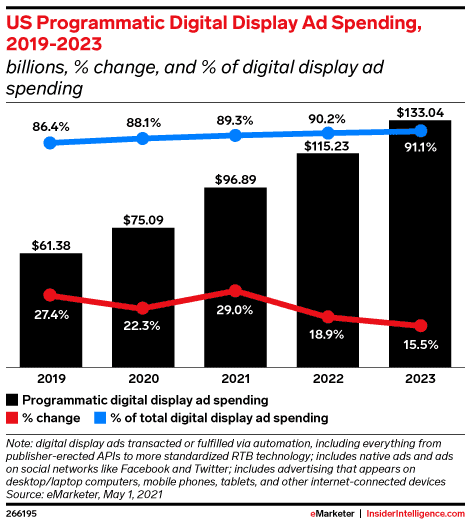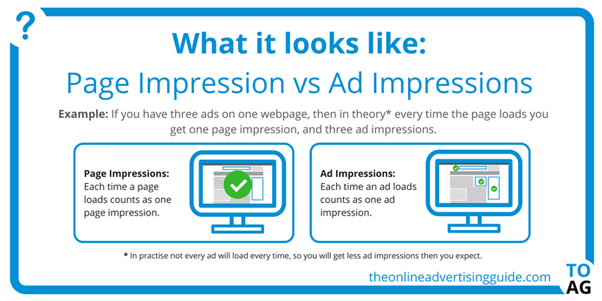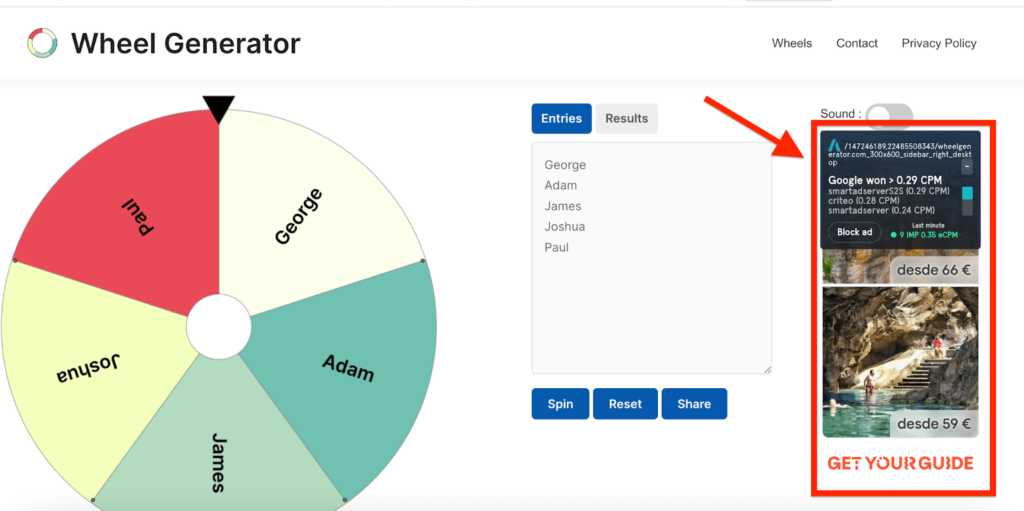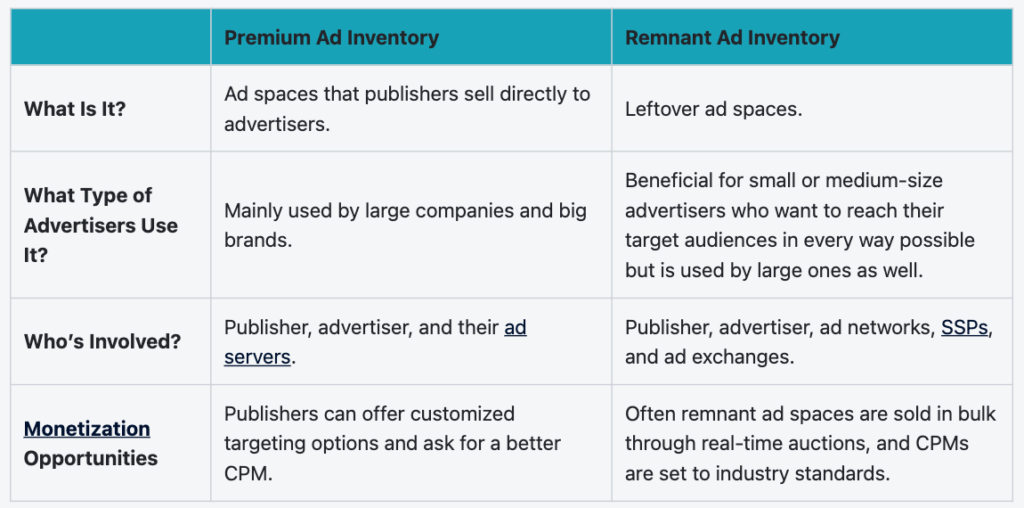What is Ad Inventory and Why It’s Important?
We have been writing volumes on the ad inventory over the years on this blog, but have you ever thought why this advertising term is one of the most challenging for publishers to grasp? Not much different from economics, inventory management is crucial for businesses as it ties up capital and resources.
This article will explain what ad inventory is, why is it important and why there is no one-size-fits-all when it comes to estimating your inventory value.
What is Ad Inventory?
Ad inventory is the total volume of advertising space that a publisher is willing to sell. Originally the term was associated with print media, but it has now largely transitioned to spaces for digital advertisements across various platforms such as desktop and mobile websites, apps, and video.
Essentially, it’s the supply of advertising opportunities a publisher offers in their digital channels.
Traditionally, the publisher would negotiate the buying and selling of ad inventory directly. However, because of the rise of programmatic advertising, the majority of the ad inventory today is being purchased via this automated software. In fact, programmatic ad spend accounts for 91.1% of the whole digital ad spend in the U.S.

Source: Insider Intelligence
Why is ad inventory important for publishers?
Ad inventory is vital for publishers because it directly affects the ad revenue they generate. The goal of every publisher is to sell the limited space they have on their digital properties (websites, apps) for the highest possible price.
Why is ad inventory important for advertisers?
For advertisers, the availability of ad inventory means they can get their ads in front of the right eyes. Because every ad inventory is unique, the value of it also differs. The more valuable the ad inventory is, the more competitive it is to secure a space on it.
How to Calculate Ad Inventory?
Calculating ad inventory involves determining the amount of advertising space you have available to sell to advertisers over a specific period. Here’s a simplified approach:
- Page Impressions: Estimate the total number of page views your website or app receives in a given period (e.g., monthly). This gives you an idea of how many ad impressions are possible. The more page impressions you have, the better, because advertisers’ ads can be seen by more people.
- Fill Rate: Your fill rate is the percentage of ad inventory that is actually sold or filled with ads. Every publisher wants their fill rate to be as high as possible, ideally 100%. If you know your historical fill rate, you can estimate the amount of inventory you’re likely to sell.
- Ads per Page: Count the number of ad slots available on each page. If your site has multiple page layouts (e.g., homepage, article pages), calculate this for each layout type. Nevertheless, when choosing how many ads to show on a single page, you should look at ad density, as this is a more accurate measure of the ideal number of ads per page that takes into account the user experience.
- Ad Impressions: Multiply the total page views by the number of ad slots per page to get the total ad impressions available. The formula is straightforward:
Total Ad Impressions=Page Views×Ad Slots per Page
The difference between page impressions and ad impressions is explained in the image below.

Source: The Online Advertising Guide

However, using plain formulas to calculate your ad inventory without context is about as useful as a chocolate teapot. There are other important factors to take into account, including:
- Adjusting for Unsold Inventory: If you have a fill rate of less than 100%, adjust your total ad impressions accordingly to estimate sellable inventory.
- Time and Seasonality: Ad inventory value fluctuates greatly depending on the time of the year and specific events for which advertisers prepare their campaigns. During certain events your ad inventory can also be sold directly through sponsorships or programmatic direct, whereas during quieter times there may not be a demand for that. Therefore, adjusting your calculations based on seasonality and changes in traffic patterns over time is crucial to accurately forecast available inventory.
- Ad Campaign Length: If you’re selling ads for specific time periods (e.g., a week, a month), calculate how much inventory you can allocate to each campaign based on its duration and your available inventory.
- Ad Space Location: Ad placement also dictates how many people are likely to see the ad and engage with it. The more viewable the ad is, the more value it offers to advertisers. According to Google, the most viewable position for an ad is ATF on the right side.

- Audience Value: Ad Inventory can be categorized based on the specific audience it reaches, allowing advertisers to target their ads more effectively. Naturally, one ad inventory might provide an ideal target audience for one advertiser and not for another.
- Ad Inventory Value: Buyer algorithms, facilitated through supply path optimization and other techniques, detect new inventory and often bid less as there is yet no data on how well this inventory is going to perform for advertisers. This is also applicable for publishers who were previously selling inventory through other channels.
Types of Ad Inventory
There are two types of ad inventory you can choose from, depending on your goals and budget:
- Premium ad inventory refers to advertising spaces that are considered to offer the highest value in terms of audience quality, engagement potential, and visibility. These spaces are typically located on highly visible spaces on the page, such as above the fold (ATF). Often these ad spaces will be sold directly to advertisers.
- Remnant ad inventory refers to advertising spaces that have not been sold through primary sales channels or reserved for premium advertisers. It is also known as unsold inventory. This ad space is often sold for a lower cost through ad networks and real-time bidding (RTB) ad exchanges.

Source: Setupad
- Mid-tier ad inventory refers to advertising space that sits between premium and remnant inventory. Mid-tier inventory typically offers decent visibility and engagement rates at more moderate prices. This category may include placements that are not as prominently positioned as premium inventory but still attract a significant audience, such as in-article banners on content pages or inside related articles.
Ad Inventory Pricing Models
There are 3 main models that determine how the ad inventory is priced:
- Cost Per Action (CPA): Pricing is tied to specific user actions, like subscription or install.
- Cost Per Mille (CPM): Pricing is set per thousand impressions, regardless of user engagement. Header bidding operates on this model.
- Cost Per Click (CPC): Pricing depends on the number of times an ad was clicked by users. The default pricing model in Google AdSense.
How Can Publishers Sell Ad Inventory?
Buying and selling online ad inventory involves several key methods:
- Real-time Bidding (RTB): An automated, real-time auction for ad space where the highest bid wins. This method is efficient and allows for centralized campaign management across different brands. Also known as Open Exchange.
- Programmatic Direct: A one-to-one buying process that can include direct negotiations. Publishers set fixed prices, eliminating the need for bidding, often used by premium publishers to offer guaranteed ad space at premium prices. In programmatic direct campaigns, advertisers can negotiate with publishers to use ad formats that are not usually available in standard programmatic, such as expandables, popups, popunders, and other custom formats.
- Private Marketplace (PMP): An invite-only version of RTB, where a publisher invites selected marketers to bid on inventory. This offers more control to advertisers over ad placement and allows publishers to secure premium rates.
- Direct Sales: Involves direct manual negotiation between a publisher’s in-house team and advertisers.

Each method offers distinct advantages and suits different publisher and advertiser needs, from automated bidding to exclusive direct deals.
Conclusion
Ad inventory represents a critical element in the digital advertising ecosystem, both for publishers and advertisers. Understanding ad inventory goes beyond simply knowing it as the total volume of advertising space available; it involves grasping the intricacies of managing, valuing, and optimizing this space.
For publishers, mastering ad inventory management is about unlocking the full potential of their digital properties, ensuring they can generate maximum revenue while providing value to advertisers.


